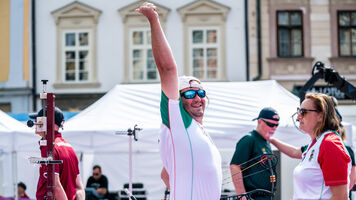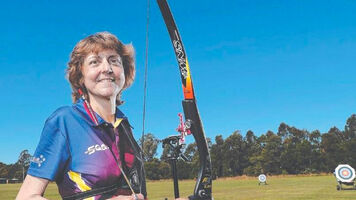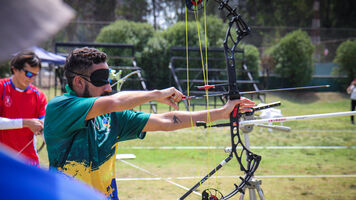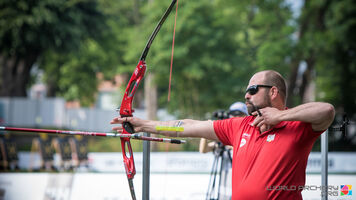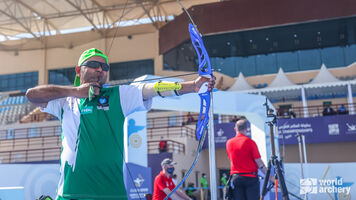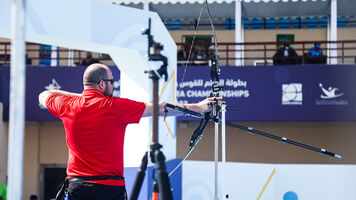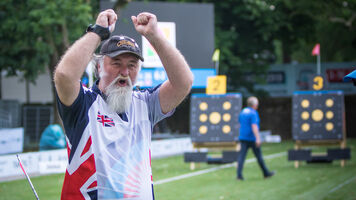Blind archers? Hit in Pilsen means visually impaired events here to stay
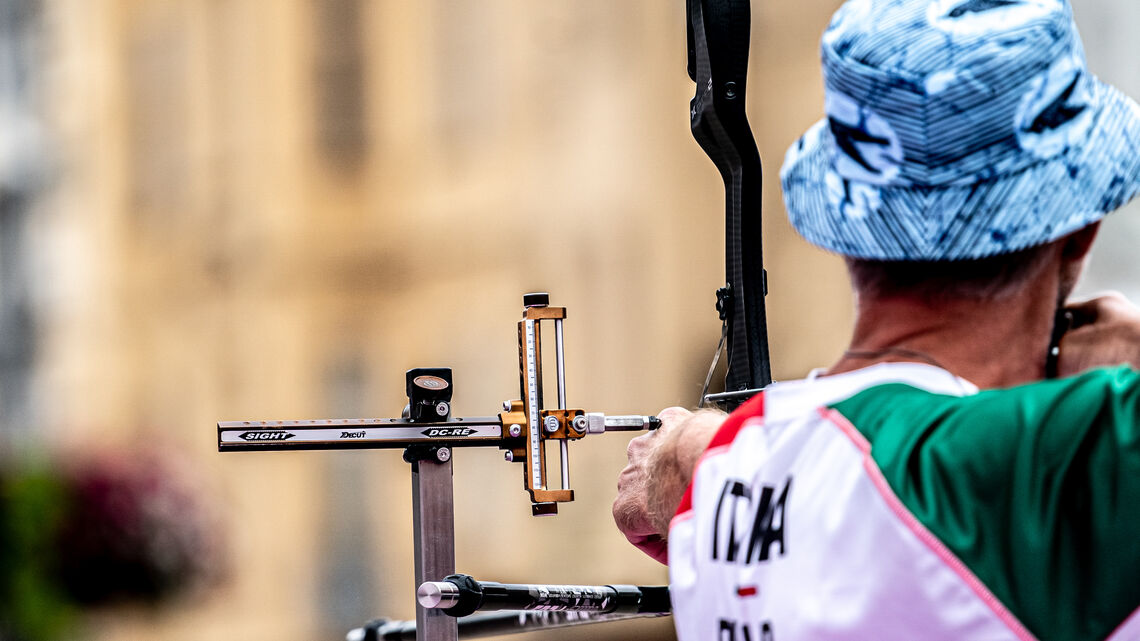
This article was published to mark World Sight Day in 2023.
Visually impaired archery is something that, on first impressions, might not make much sense.
Aim, after all, is a large part of the sport. The vast majority of archers look through their sight at the target and decide where and when to loose the arrow. But aiming is really a very small part of shooting an arrow.
Far more important is posture, technique, control and commitment, the mental side of the game.
Perhaps the wider realisation that the appeal of archery is not really about what you can see has caused such growth in the visually impaired categories of para archery.
“We have a lot more archers now,” says Ruben Vanhollebeke, the two-time World Archery Champion in the visually impaired 1 category, which is for those who are completely or almost completely blind. “It’s a lot of fun. We are a big happy family, everybody knows each other.”
Athletes in Ruben’s category wear a blindfold to level the playing field, while those in the visually impaired 2/3 category compete without.
A record 22 visually impaired archers competed at the 2023 World Archery Para Championships in Pilsen, up from just a handful when it was first introduced as an exhibition in 2005. Footage of the finals has been viewed by more than 100,000 people.
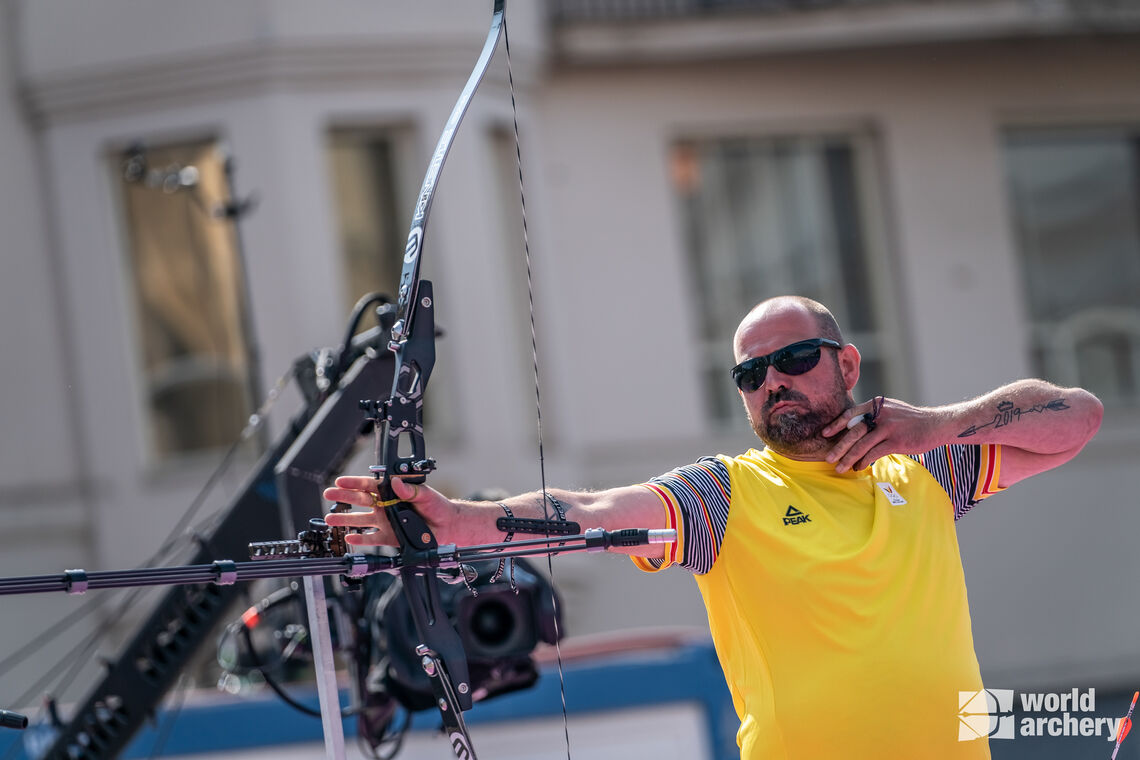
Tanveer Ahmed, who secured Pakistan’s first-ever World Archery Para Championship medal with silver in 2022, said that there were more than 60 archers competing in visually impaired competitions at home.
The first visually impaired titles were awarded at the Pan American Championships in 2022 – and blind archers from Egypt and Uganda were competing in Britain in mid-2023.
Visually impaired archery has now hit all five continents.
“It’s very difficult now to say who’s going to come out on top, which is a brilliant thing for the sport and for archery,” says Steve Prowse, who was one of the first international visually impaired archers having won world titles in 2007, 2015, 2019 and 2023.
“It’s been a very long journey, but incredibly rewarding. It has given me a real sense of purpose.”
Visually impaired archers aim using a tactile sight, suspended on a tripod, which they press against the back of their bowhand.
“It has also been quite frustrating at times, trying to get people engage with the fact that visually impaired people can shoot and shoot well,” adds Prowse.
Visually impaired archery was included as a demonstration event at the world para championships in 2005 before making its official debut in 2007 and appearing again in 2009. At this time, the International Paralympic Committee was responsible for regulating para archery.
Years of on-again-off-again appearances at championships ended when rules for the category settled ahead of the worlds in 2019.
“It’s a great journey for visually impaired archery,” said Vanhollebeke. He won gold on the event’s return. “It’s a rollercoaster of emotions.”
As the expertise required to coach blind athletes grows, and more people understand how easy it is to create a simple tactile sight – a standard archery sight on a tripod, as well as some target pins stuck in the ground, is a good start – so will the number of visually impaired archers, both domestically and internationally.
“It’s probably one of the only sports where the gender doesn’t matter, where it doesn’t matter whether you’re shooting a recurve or a compound,” says Prowse, who started archery before beginning to lose his sight.
Steve has experienced the progress that visually impaired archery has made over the past two decades.
And as momentum in the community continues to build, international entry numbers continue to rise and it becomes tougher and tougher to win major titles, the question starts to be asked: Is inclusion at the Paralympics, for this inclusive event, on the horizon?
“Fingers crossed,” says Vanhollebeke. “Maybe we go in 2028.”





